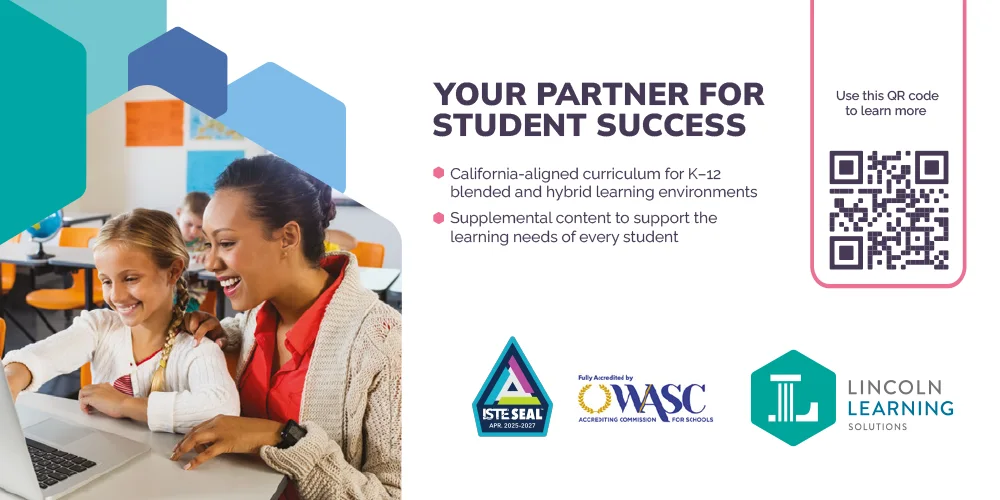



Staff
Troy Flint | tflint@csba.org
Editorial Director:
Kimberly Sellery | ksellery@csba.org
Staff Writers and Contributors:
Alisha Kirby | akirby@csba.org
Heather Kemp | hkemp@csba.org
Chris Reefe | creefe@csba.org
Christa Jang | cjang@csba.org
Marketing & Communications Director:
Monica Griffis | mgriffis@csba.org
Graphic Design & Branding Director:
Kerry Macklin | kmacklin@csba.org
Graphic Designers:
Thairah Singharath | tsingharath@csba.org
Amanda Moen | amoen@csba.org
Dr. Bettye Lusk | Monterey Peninsula USD
President-elect:
Dr. Debra Schade | Solana Beach SD
Vice President:
Sabrena Rodriguez | Ventura USD
Immediate Past President:
Albert Gonzalez | Santa Clara USD
CEO & Executive Director:
Vernon M. Billy
News and feature items submitted for publication are edited for style and space as necessary.

President’s Message: Bettye Lusk
At the May 2025 Delegate Assembly, 227 trustees from districts of all sizes gathered to consider the biggest issues facing California public schools. Yet, we devoted the greatest portion of our time to CSBA’s Policy Pillars, overarching concepts that are critical to facilitating the outcome we desire for California schools — a world where all students graduate prepared for post-high school success and with the skills to be lifelong learners and effective, contributing members of society.
Of the 3.2 million middle and high school students enrolled during the 2023–24 school year, an estimated 244,000 — about 10 percent — identify as falling on the LGBTQ spectrum, comprising lesbian, gay, bisexual, transgender, queer or questioning and other gender identities.

Moderated by Crocus, LLC’s Ann Willemssen, who serves as a facilitator for CSBA’s AI Taskforce, the event started with Nick Clair, a partner at Lozano Smith, covering the basics of AI and how it is commonly used in schools today.
Recognizing the advantages, risks and complexity of AI’s integration into public education, CSBA has developed Board Policy 0441 – Artificial Intelligence, which will be released as part of the June 2025 Policy Update Packet. This new board policy provides a foundation for governing boards to navigate the fast-evolving development of AI, with a focus on responsible, equitable and transparent use.
The national average public school teacher salary in 2023–24 increased 3.8 percent from the previous year to $72,030 and is projected to grow a further 3 percent in 2024–25. The national average beginning teacher salary was $46,526. At 4.4 percent, the increase in the average starting salary was the largest in the 15 years that NEA has been tracking teacher salary benchmarks. However, accounting for inflation over the past 16 years, adjusted starting salaries are now $3,728 below 2008–09 and teachers are making 5 percent less than they did 10 years ago.
Summer learning loss is the term used to describe the phenomenon of students returning to classrooms in the fall having forgotten some of what they learned during the previous school year. Researchers have been documenting summer learning loss over the last several decades and the evidence of its negative effects continues to grow. In a study of 18 million first to sixth graders from 2008–16 by the American Educational Research Association, researchers looked at test scores over the course of five summers and found students can lose up to 40 percent of a school year’s learning over summer break — and the effect was cumulative if they continued to have learning loss in consecutive summers.
The board continued discussion and provided feedback on incorporating technical and policy changes to student-level data processing and developing the resources necessary to support the annual release of the California School Dashboard by Nov. 15.
Through a series of case studies, researchers were able to identify best practices for identifying homeless students, tracking their attendance, and using community and state support to address barriers that keep them from getting to school.
Thirty-four percent indicated that the schools received “just enough” money while 13 percent believe they receive “more than enough.” A report on the findings notes that of the 50 states, California ranks 17th in per-pupil expenditures for K-12 public education.

In January, the Yolo County Office of Education (YCOE) launched the Yolo Center for Language and Literacy, in partnership with the Center for Public Service and Education at the University of California, Davis, and the California Reading and Literature Project (CRLP) at UC San Diego. The center aims to enhance literacy and language development across Yolo County and the greater Sacramento region by improving classroom instruction and student learning. CRLP is a part of the California Subject Matter Project, which aims to improve K-12 instruction.
Attention: For more information about events, visit www.csba.org/TrainingAndEvents.










